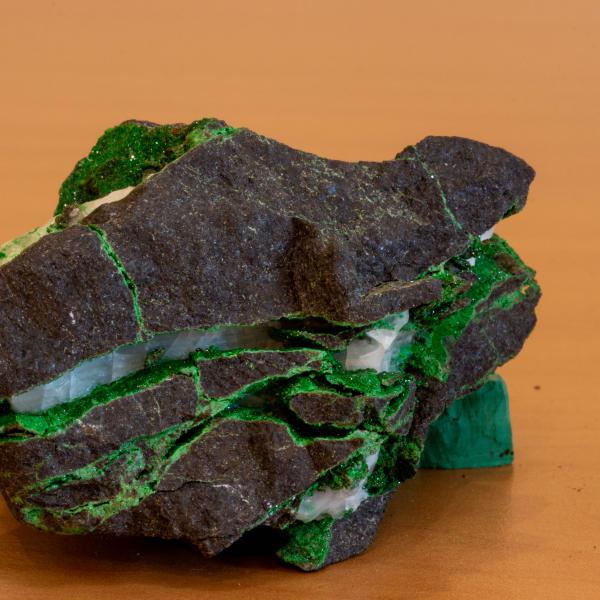World rocks photo collection
Peridotite
Russia, Perm region, Saranovskoe chromite deposit. Saranovskiy chromite-bearing gabbro-peridotite massif. Possesses large reserves of chromite ores. The outcropping area of ultrabasic rocks is only 0.22 km2, with a length of 1700-1800 m and a width of about 200 m. The maximum width of the massif in the middle part, including gabbroids, is about 400 m. Its strike is submeridional (0-345 °). In the northern direction, the massif gradually sinks to a depth and is traced in the buried part for 500 m. The peridotites of the massif are represented by serpentinites, in most cases with a preserved relict structure. Peridotites differ in the varying ratios of their earlier composing olivine, pyroxene, and Cr-spinel. In some areas, especially in the western contact zone, the content of pyroxenes decreases to 7-10%. The number of accessory Cr-shinelides increases markedly with approaching the ore-bearing zone. Peridotites are often coarse-grained. They are of poikilitic, poikilitophytic, and pegmatoid composition; poikilitic peridotites are characterized by a fairly constant grain size of olivines (2-4 mm). Olivine grains are usually rounded; small idiomorphic Cr-spinel grains are included in larger rhombic pyroxene grains or in their aggregate. Pegmatoid peridotites have the same structure, but coarser and unstable grain size, the grain size of olivine substituted by serpentine varies from 1-2 to 10-30 mm. and more. Sometimes there is a monoclene pyroxene replaced by chlorite and tremolite. The deposit is known for the large number of collection specimens of Uvarovite.


Comments
Add new comment